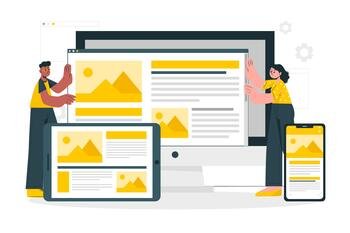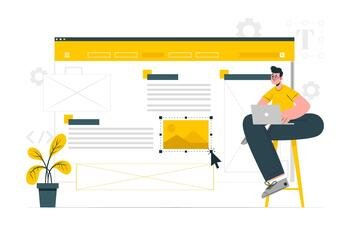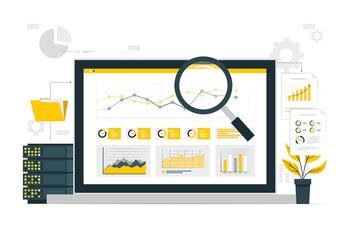Boost Your Google Rankings with On-Page SEO That Works
Our on-page SEO services combine technical expertise and content strategy to help your pages rank higher, load faster, and perform better. From meta title optimization and keyword placement strategy to internal linking and structured data markup, we cover every on-page factor that impacts visibility. Whether you're a small business, SaaS brand, or B2B company, we tailor every on-page SEO audit to meet your goals and Google's evolving standards.

What Is On-Page SEO and Why It’s Critical
On-page SEO refers to the practice of optimizing individual web pages, both in content and HTML code, to rank higher and earn more relevant traffic. It includes everything from meta title optimization and keyword placement strategy to internal linking and responsive design for SEO. In 2025, with Google’s AI-first indexing, semantic SEO, E-E-A-T (Experience, Expertise, Authoritativeness, Trustworthiness), and Core Web Vitals are non-negotiable for visibility. On-page optimization now directly influences AI-powered SERP appearance optimization, zero-click results, and rich snippets.
Drive higher ROI from your campaigns!
On-Page SEO Strategy in Action
Our on-page SEO process is built to deliver sustainable ranking gains by aligning every element of your page with Google's evolving search algorithms.

Site Audit
We begin with a complete technical and content audit using tools like Screaming Frog and Google Search Console to uncover crawl errors, broken links, missing tags, content gaps, and performance issues. This helps us benchmark your site’s current health and identify opportunities to improve indexing, crawlability, and overall on-page structure.

Keyword Mapping
We map high-value keywords: short, long, and semantic, across key pages based on search intent, content themes, and business goals. Using data from Surfer SEO, Ahrefs, and NLP analysis, we align every page with the right set of primary and contextual keywords, helping you rank for conversational queries, keyword variations, and topic clusters.

Optimization
We implement on-page changes focused on meta title optimization, HTML header tag structure, canonical tag implementation, content relevance, and internal linking strategy. We improve your content readability score, enhance structured data markup, and optimize for Core Web Vitals through mobile responsiveness, lazy loading and script minification, and clean code.

Testing & Refinement
We conduct detailed UX and content usability testing, reviewing everything from breadcrumb markup to page layout, anchor text distribution, and H1-H6 hierarchy. Using Clearscope and PageSpeed Insights , we validate readability, engagement signals, and visual hierarchy to ensure the user experience matches search engine expectations.

Monitoring & Reporting
After implementation, we continuously track performance using rank trackers, analytics dashboards, and A/B tests. We monitor user engagement signals, update content for freshness, and adjust based on changes in Google's ranking systems. Monthly reviews include technical re-scans and refinement of SEO elements for ongoing growth.
Who Should Use On-Page SEO?
Whether you're a startup, local shop, or enterprise-level brand, on-page SEO is essential for growing your online visibility and capturing search intent. Our on-page SEO services for small businesses, SaaS companies, and e-commerce brands help improve keyword rankings with on-page SEO, user engagement signals, and content relevance across every industry.
1
B2B Companies
We help B2B brands rank for short, long, and conversational bottom-funnel queries by page structure optimization and internal linking. As meta tag optimization experts, we improve lead generation with topic clustering and keyword placement strategies that align with buyer intent.
2
Local Businesses
From accurate NAP citations to geo-targeted content using semantic keyword clusters, we help local businesses show up in map packs and organic search. If you’ve been wondering how to optimize for semantic keywords in your content, our on-page SEO for local pages improves visibility, supports structured data markup, and boosts trust signals in your community.
3
E-commerce Brands
Enhance product visibility and reduce bounce rates through clean URL structure, product schema, breadcrumb markup, and fast-loading responsive pages. We optimize meta titles, alt attributes, and Core Web Vitals to improve the shopping experience and conversions.
4
SaaS & Tech Startups
Our on-page SEO audit services for SaaS sites focus on building topical authority, aligning pages with NLP-driven keyword strategies, and improving page layout for demo and signup flows. We structure H1-H6 headers to support semantic SEO and maximize indexability.
5
Content-Driven Publishers
Blogs, media sites, and publishers benefit from content optimization services like HTML tag structuring, freshness updates, and internal linking that improve the crawl depth. We also help surface related articles using LSI keywords and NLP techniques.
6
Enterprise & Global Brands
Large websites with thousands of pages need scalable solutions. We deliver canonical tag implementation, duplicate content resolution, and structured data for rich SERP features across multilingual and multi-regional setups.
Ensure Precision: Secure Your Website SEO Audit Now!
Here’s what you can expect:
- On-Page SEO Analysis
- Technical SEO Assessment
- Off-Page SEO Examination
- User Experience and Mobile Optimization

Optimization Suite We Rely On
We leverage industry-leading SEO tools to ensure data-driven precision and actionable insights. From content optimization to technical diagnostics, our toolkit addresses every critical factor impacting search performance.
- SurferSEO & Clearscope: For semantic content optimization and keyword scoring. These tools help craft content that aligns with user intent and outperforms competitors in SERPs.
- Screaming Frog: For crawling, indexing, and technical diagnostics. It uncovers broken links, duplicate content, and site structure issues that impact organic visibility.
- Google Search Console: For indexing, mobile usability, and core issue resolution. We use it to monitor search performance, resolve errors, and ensure proper website indexing.
- PageSpeed Insights & GTMetrix: For Core Web Vitals and site performance audits. These platforms pinpoint speed bottlenecks and provide clear recommendations to enhance user experience and rankings.
42 %
More Featured Snippet Wins52 %
Boost in Target Keyword RankingsFAQs
On-page SEO refers to optimizing elements within your website, like content, meta tags, internal links, and HTML structure, to improve rankings. Off-page SEO focuses on external signals such as backlinks, citations, and brand mentions. Both are essential, but on-page builds the foundation for search visibility.
User experience (UX) directly influences on-page SEO by affecting engagement signals like bounce rate, time on site, and click-through rate. A well-structured layout, fast load times, and mobile responsiveness help users stay longer and interact more, sending positive signals to search engines.
On-page SEO ensures your content, structure, and HTML elements are optimized for search intent and crawlability. It directly impacts how well your page is understood and ranked by Google’s algorithms.
On-page SEO covers meta tags, headers, keyword usage, content quality, internal links, schema, and page speed. These factors help search engines assess and surface your content more effectively.
Optimized images improve load speed, enhance accessibility, and contribute to better Core Web Vitals. Alt attribute optimization also helps search engines understand image context, improving topical relevance.
On-page SEO includes both content and technical page elements, whereas Content SEO focuses on keyword strategy, structure, and quality of written material. Together, they drive better rankings and user experience.
Yes. AI models still rely on structured data, quality signals, and optimized content to generate answers. Pages with strong on-page SEO have higher chances of being featured in AI overviews or zero-click boxes.
Include author credentials, cite trustworthy sources, and maintain updated content with expert insights. Clean structure and transparent information architecture also build trust with users and search engines.
Review and refresh every 3–6 months, or when keyword trends shift. Frequent optimization ensures you remain aligned with evolving algorithms and competitive SERPs.
A clean, mobile-responsive design improves engagement metrics like bounce rate and time on site. These behavioral signals influence how Google evaluates user satisfaction and content quality.
Use one H1 per page, followed by clear, logical H2–H6 subheadings to create a semantic hierarchy. Proper header tag hierarchy helps both search engines and users navigate your content
Update high-value pages quarterly to reflect new data, search intent, or industry trends. Fresh content signals relevance to Google and helps retain your rankings over time.
















